Each year since 2018, we have asked members of the NOAA Education community to share their most memorable photos of the year. These images highlight program successes and challenges while honoring the dedication of teachers, educators, and NOAA staff across the country. The photos from 2022 show us what life looked like as NOAA Education programs opened up to in-person events again and students and teachers got back inside (and outside!) the classroom. Take a look at our favorite photos from the past year.
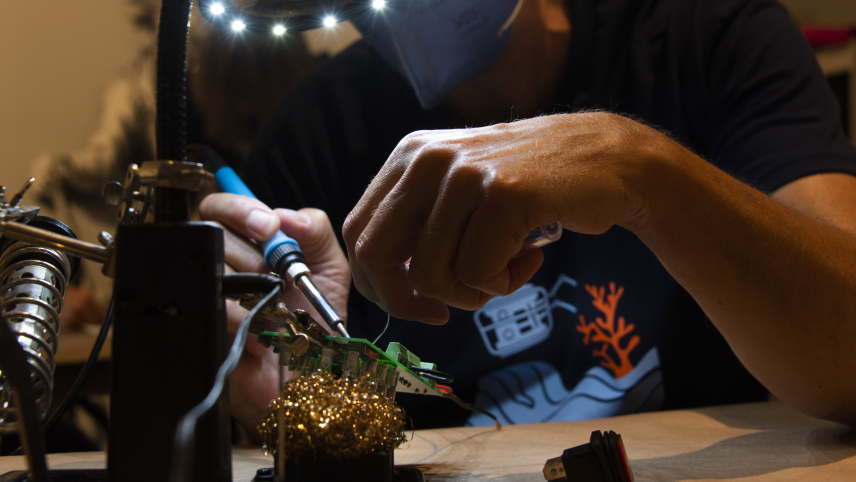
Teacher at Sea alumnus Jeff Miller solders a remotely operated vehicle (ROV) control box circuit board during the Teacher at Sea Alumni Association offsite link's Project ROVe: Design and Build workshop in July 2022. Alumni who completed an online ROV introductory course through the association earlier in the year were eligible to participate in this hands-on ROV building workshop over the summer. (Ryan Hawk)
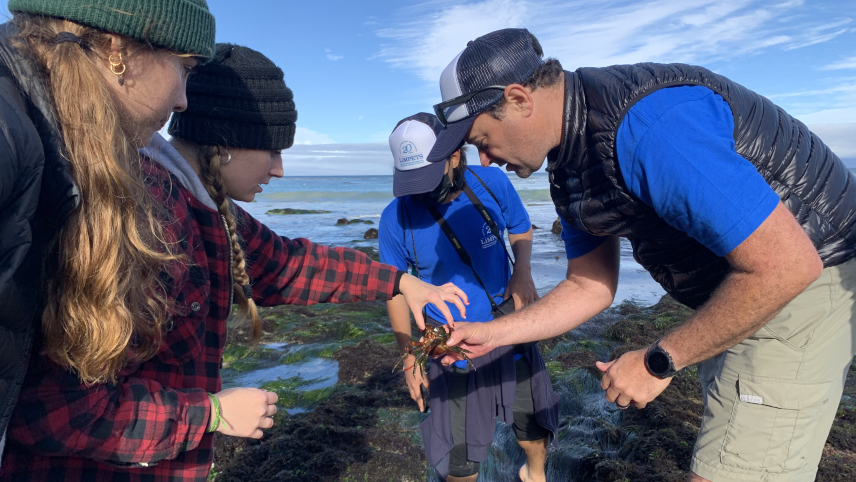
A teacher introduces his students to a kelp crab he discovered in the tide pool of Becher's Bay in a no-take marine reserve, NOAA’s Channel Islands National Marine Sanctuary. A no-take marine protected area is a highly protected reserve where removing or destroying natural or cultural resources is prohibited. (Claire Fackler, NOAA National Marine Sanctuaries)
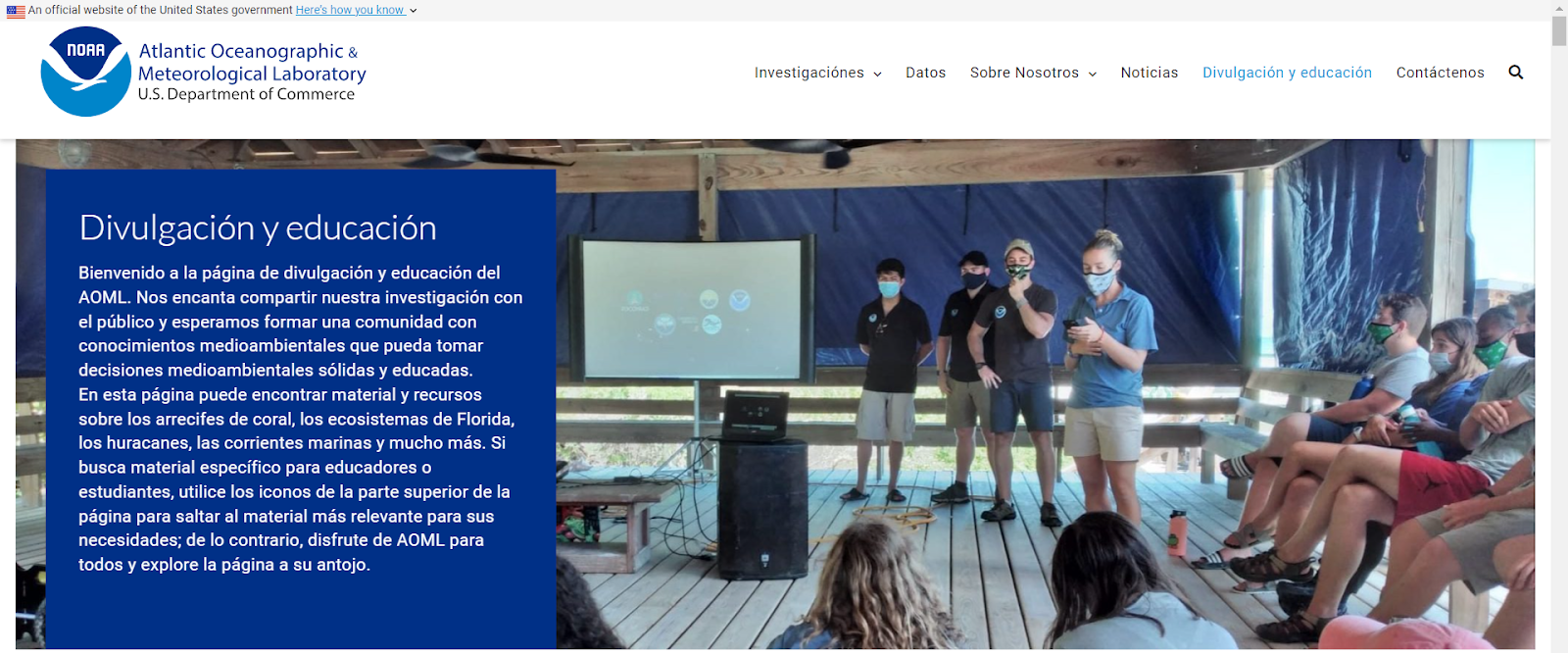
NOAA’s Atlantic Oceanographic and Meteorological Laboratory (AOML) strives to make information accessible to everyone. One way this is done is by giving people the option to translate web pages into Spanish. By providing all of AOML’s important information to non-English speakers, more people can immerse themselves in the valuable research NOAA does at AOML and learn how they can get involved in science. (NOAA’s Atlantic Oceanographic and Meteorological Laboratory)
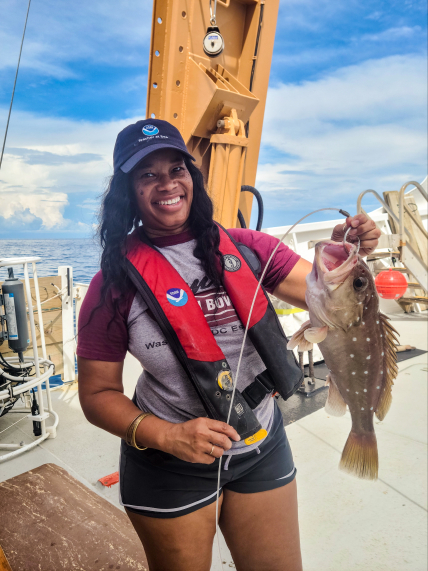
Teacher at Sea Maronda Hastie, a high school math teacher from Atlanta, shows off a snowy grouper captured during the bottom longline survey aboard NOAA Ship Oregon II. NOAA scientists conduct this survey annually to monitor the populations of sharks, snappers, and groupers. (NOAA Teacher at Sea Program)
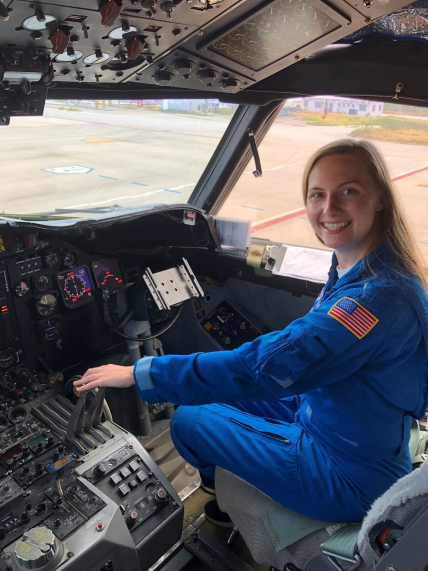
AOML communications intern and University of Miami graduate student Holly Stahl sits in the cockpit of NOAA’s WP-3D Orion Hurricane Hunter aircraft “Kermit” after completing her first Hurricane Hunter mission into Tropical Storm Fiona on September 17, 2022. Holly was a guest observer on the research flight from Aruba, which flew over the Caribbean collecting valuable data to help scientists better understand tropical cyclone development. (Holly Stahl/NOAA’s Atlantic Oceanographic and Meteorological Laboratory)
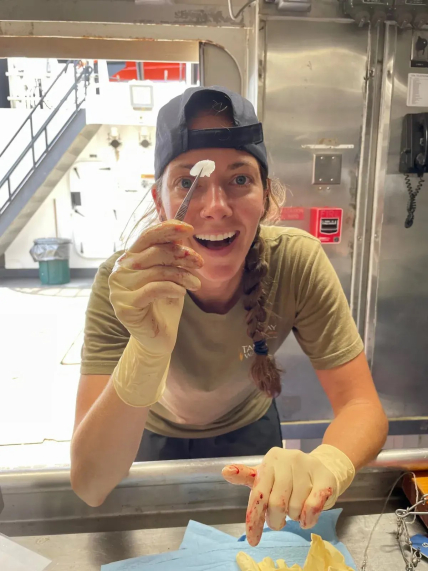
During her two-week mission aboard NOAA Ship Pisces, Teacher at Sea Jordan Findley, an environmental educator from Florida, learned to extract otoliths from sampled reef fishes. Here, she holds one up to the light to view its rings. "Otoliths are basically ear bones," she explains in her blog offsite link. "What is cool about them is that they grow throughout the life of a fish ... Seasonal changes in growth are recorded on the bone and appear as alternating opaque and translucent rings." Scientists count these rings to estimate the fish's age. (NOAA Teacher at Sea Program)
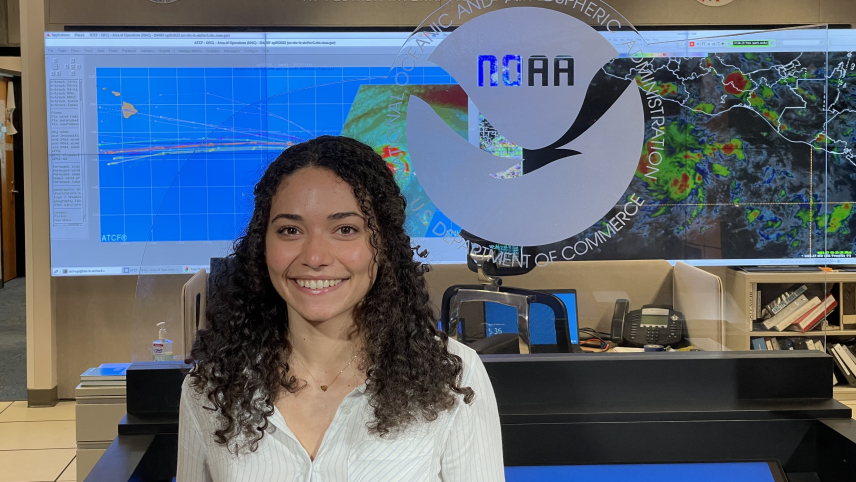
Delián Colón-Burgos — a 2021 Hollings scholar from Puerto Rico — says that, “the frequent threat of tropical cyclones fostered a passion [in me] for weather early on.” For her 2022 summer internship, she worked at the National Hurricane Center where she contributed to an ongoing research project on hurricane wind speed. (Aidan Mahoney)
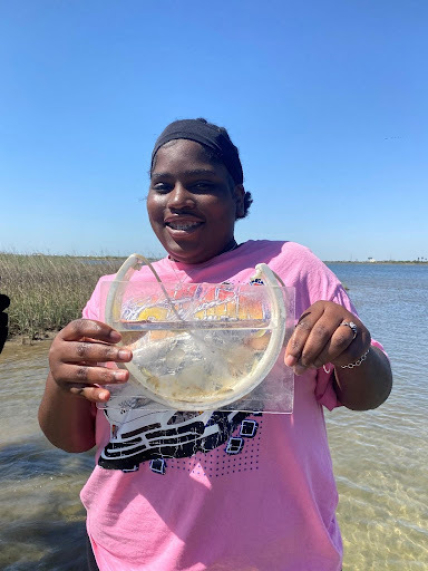
Syncere McWilliams, a Texas City High School student, holds a variety of aquatic bay species she caught in the seine net at the Sweetwater Preserve in Galveston as part of the NOAA Planet Stewards project Get Hip to Habitat. (Megan (Imme) Sambilay, Galveston Bay Foundation)
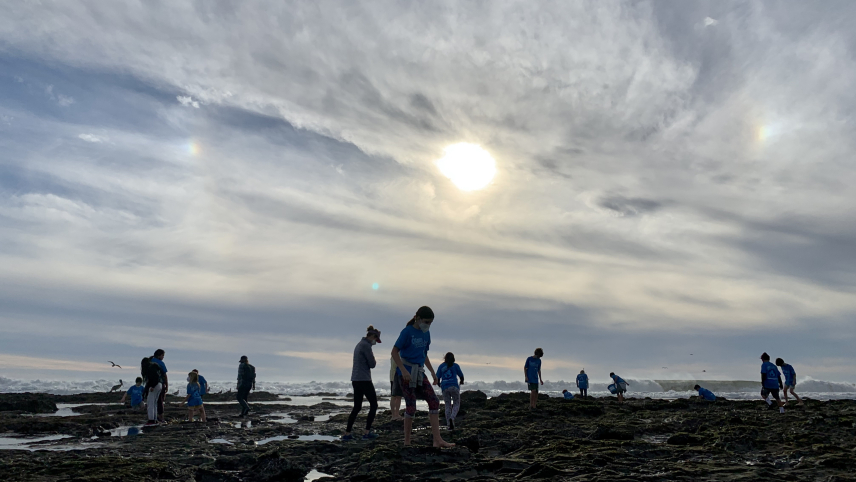
Members of the public explore tide pools in Santa Barbara during a low winter tide. Tide pools are accessible locations where visitors can engage with the ocean in a safe and fun way. (Claire Fackler, NOAA National Marine Sanctuaries)
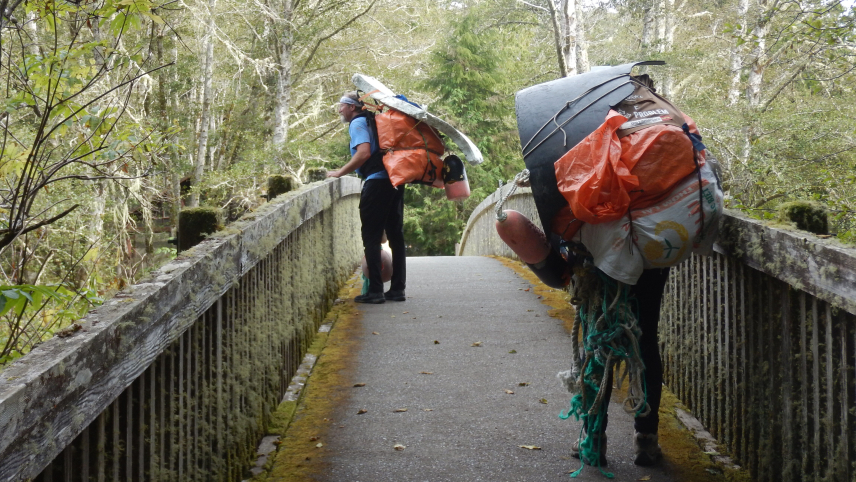
Twin Harbors Waterkeeper volunteers went the extra mile (six, actually!) to remove marine debris from remote beaches in Olympic National Park, adjacent to Olympic Coast National Marine Sanctuary. On their hike out, they took a much deserved break to enjoy the beauty of the fall foliage and the Ozette River. (Lee First, Twin Harbors Waterkeeper)
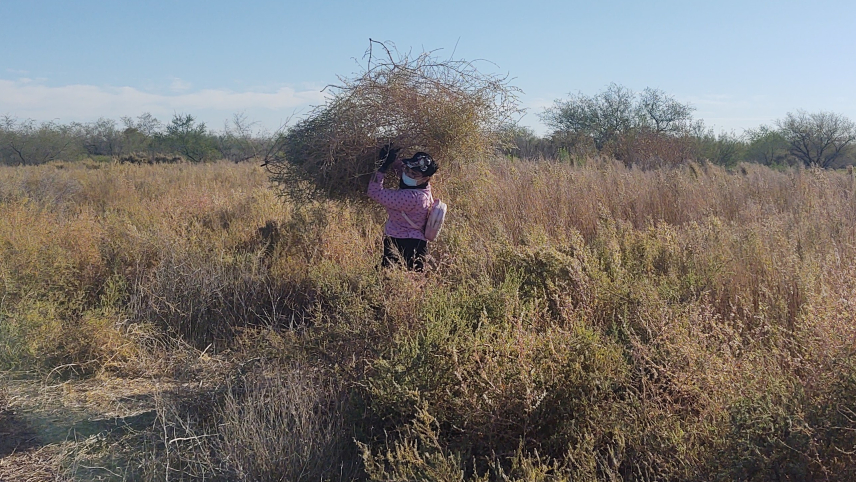
As part of their NOAA Planet Stewards project: Young Stewards Promoting Border Resiliency, Norma Rubio, Mission Early College High School student, carries a bunch of invasive Salsola kali (tumbleweeds) that were removed from the wetland site. Their project will restore one acre of riparian wetland habitat adjacent to the Rio Grande River in El Paso, Texas, removing invasive species and transplanting native vegetation. (Jennifer Ramos-Chavez, Insights El Paso Science Center Inc.)
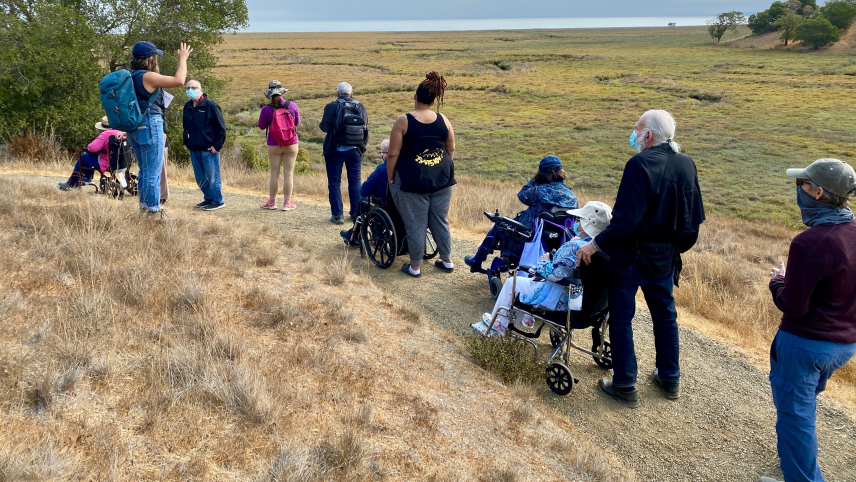
Community members from Marin Lifehouse, an organization that provides support for people with developmental disabilities, visited China Camp State Park, a component site of the San Francisco Bay National Estuarine Research Reserve offsite link. The San Francisco Bay National Estuarine Research Reserve provided outdoor learning opportunities for community members, experiences that enabled them to explore and learn about the estuary. (Courtesy of Bella Mayorga/San Francisco Bay National Estuarine Research Reserve)

